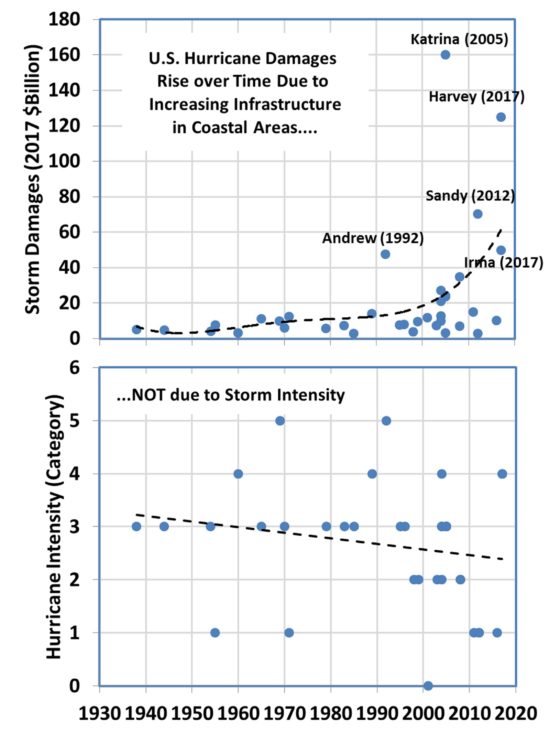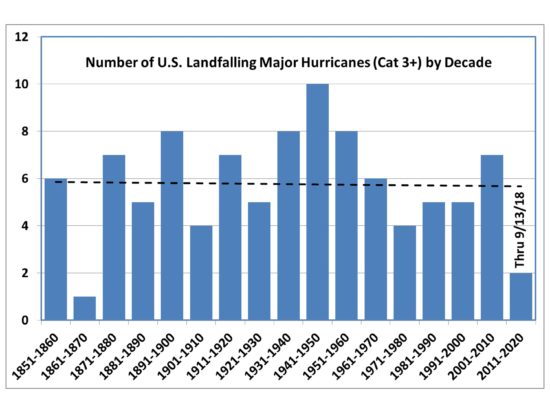UPDATE: Includes all 36 most-destructive U.S. hurricanes in the U.S. Govt. report.
As part of the 2nd edition of my Kindle e-book Inevitable Disaster: Why Hurricanes Can’t Be Blamed On Global Warming, I include the following graph, based upon data in a January 2018 U.S. Government report.
In the top panel we see that the average monetary damages of the 36 most costly hurricane disasters in U.S history has gone up dramatically in recent decades.
But in the 2nd panel we see that the average intensity of those 36 most costly storms has not increased actually decreased..

Most recent (2018) U.S. Government analysis of the 36 most costly hurricane disasters in U.S. history, showing that increasing damages are due to increasing population density and infrastructure vulnerability, not due to storm intensity.
The increasing number of “damaging” storms in recent decades is, of course, an artifact of the increasing monetary damages with time: only the 36 most costly storms are included.
Of course, this is what Roger Pielke, Jr. has been saying for years.
If you are wondering about whether the number of ALL major hurricanes (whether causing major damage or not) have increased, here’s that plot. Even considering there’s still some time left in the current decade, I’d say there’s no statistically significant trend…and certainly a downward trend since the 1940s!:


 Home/Blog
Home/Blog



